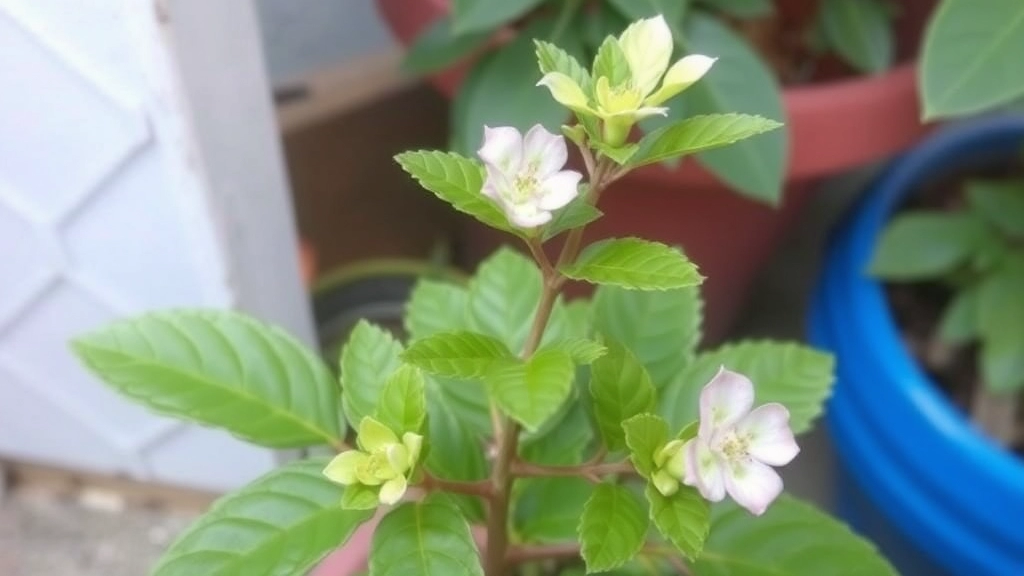Kalanchoe Pinnata in Traditional Medicine
When it comes to traditional medicine in Tamil Nadu, Kalanchoe Pinnata, known locally as Malaikkalli or Ranakalli, holds a special place. This plant is celebrated for its myriad medicinal properties, from treating minor cuts to addressing more serious health concerns. In this article, I’ll dive into the various uses and benefits of Kalanchoe Pinnata, particularly focusing on its significance in Tamil culture.
Growing Kalanchoe Pinnata
Growing Kalanchoe Pinnata in tropical climates like Tamil Nadu is relatively straightforward. The plant thrives in well-drained soil and requires minimal maintenance, making it a favourite among home gardeners. I’ll also share some tips on how to propagate this versatile plant, ensuring that you can enjoy its benefits right in your backyard.
Have you ever wondered how local plants can serve as powerful allies in health and wellness?
Kalanchoe pinnata, often referred to as ‘Miracle Leaf’ or ‘Air Plant’, is a remarkable herb widely celebrated in Tamil Nadu for its diverse medicinal properties.
This succulent is not just a pretty addition to gardens; it has been a staple in traditional medicine for generations.
Key Medicinal Uses:
Anti-inflammatory Properties: Kalanchoe pinnata is known to alleviate inflammation, making it useful for conditions like arthritis.
Wound Healing: The leaves can be crushed and applied topically to promote healing of cuts and bruises.
Respiratory Health: Infusions made from the leaves are often consumed to relieve respiratory issues such as coughs and colds.
Digestive Aid: It is believed to help with digestive ailments, including ulcers and indigestion.
Antimicrobial Effects: The plant possesses natural antimicrobial properties that can combat infections.
These medicinal uses are not just anecdotal; they are rooted in the rich traditions of Tamil Nadu’s herbal medicine.
Local Significance
In Tamil Nadu, Kalanchoe pinnata is more than just a plant; it is a symbol of local wisdom and a testament to the region’s rich biodiversity.
Families often pass down knowledge on how to utilise this plant for various ailments, fostering a sense of community and shared heritage.
Common Tamil Names and Local Significance

Have you ever wondered how a plant can carry so much cultural weight? Kalanchoe Pinnata, known locally by various names, is more than just a pretty leaf in Tamil Nadu; it’s a symbol of healing and tradition.
Local Names
In Tamil Nadu, Kalanchoe Pinnata is often referred to as “Ponnanganni” or “Kalanchoe”. These names resonate deeply within the local community, reflecting the plant’s importance in traditional medicine and everyday life.
Cultural Importance
- Medicinal Heritage:
- The leaves of Kalanchoe Pinnata are used in numerous local remedies.
- Families pass down knowledge about its healing properties from generation to generation.
- Spiritual Significance:
- In some cultures, it is believed that keeping this plant at home brings good fortune and health.
- It’s often used in rituals and blessings, showcasing its role beyond just physical benefits.
- Culinary Uses:
- Some communities incorporate the leaves into their diets, appreciating both the taste and health benefits.
- This highlights how intertwined the plant is with daily life in Tamil Nadu.
Community Practices
- Gatherings and Celebrations:
- During festivals, you might find Kalanchoe Pinnata being offered as a part of traditional offerings.
- Gardening Traditions:
- Many families grow this plant in their gardens, not just for its beauty but for its medicinal value.
Growing Kalanchoe Pinnata can be a rewarding venture, especially in tropical climates where it thrives. Many enthusiasts often wonder how to cultivate this resilient plant successfully.
### Ideal Conditions
To ensure a healthy growth environment, consider the following factors:
– **Sunlight**: Kalanchoe Pinnata loves bright, indirect sunlight. A location that receives at least 6 hours of light daily is ideal. Too much direct sun can scorch the leaves.
– **Soil**: Well-draining soil is crucial. A mix of potting soil with sand or perlite works wonders. This ensures that the roots do not sit in water, preventing rot.
– **Watering**: Water sparingly. Allow the soil to dry out between waterings. Overwatering can lead to root rot, a common issue for this plant.
– **Temperature**: This plant prefers warm temperatures, ideally between 20°C and 30°C. It can tolerate higher temperatures but should be protected from frost.
### Propagation
Kalanchoe Pinnata is easy to propagate. You can do this through leaf cuttings or offsets. Here’s how:
– **Leaf Cuttings**: Cut a healthy leaf and let it dry for a day. Then, place it in soil, ensuring it has good contact. Water lightly until roots develop.
– **Offsets**: The plant produces small offsets that can be gently removed and replanted.
### Maintenance Tips
Regular maintenance can enhance growth:
– **Fertilisation**: Use a balanced, diluted fertiliser during the growing season to encourage robust growth.
– **Pruning**: Trim dead or yellowing leaves to promote new growth and maintain the plant’s appearance.
– **Pest Management**: Keep an eye out for common pests like aphids and mealybugs. Neem oil is a natural remedy that can help keep them at bay.
For more detailed care instructions, you might find our [complete guide to Kalanchoe Pinnata air plant care](https://planthq.org/complete-guide-to-kalanchoe-pinnata-air-plant-care/) helpful. Additionally, if you’re interested in the health benefits of this plant, check out our article on the [medicinal uses and health benefits of Kalanchoe Pinnata](https://planthq.org/kalanchoe-pinnata-medicinal-uses-health-benefits-applications/).
Traditional Remedies Using Kalanchoe Pinnata Leaves
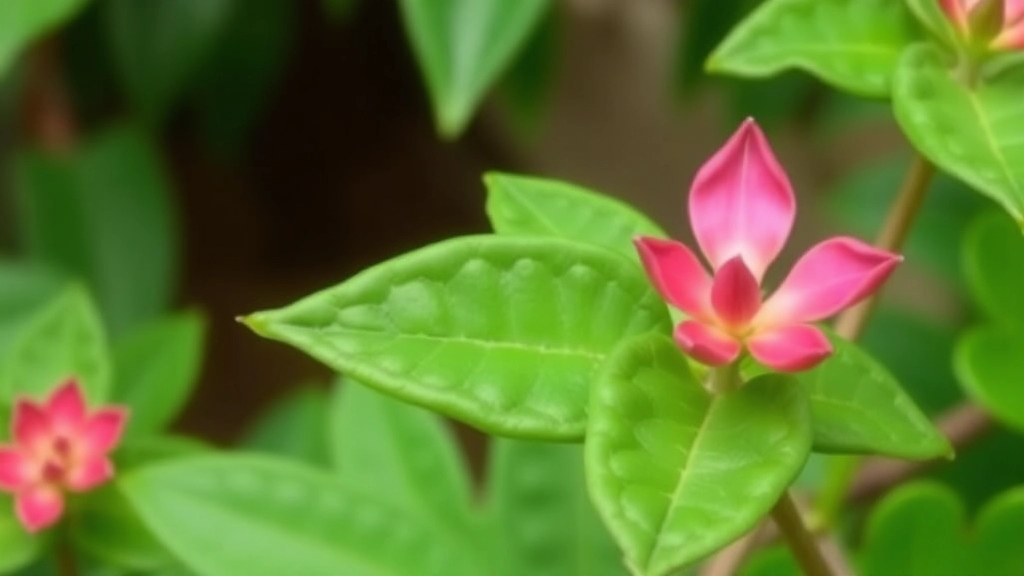
As we explore the medicinal uses of Kalanchoe Pinnata, it’s essential to delve into its traditional remedies, which have been passed down through generations in Tamil Nadu.
Many people wonder how to harness the healing properties of Kalanchoe Pinnata leaves for common ailments.
Common Remedies
- Wound Healing
The fresh leaves can be crushed to extract the juice, which is then applied directly to cuts and wounds. This natural remedy is revered for its antibacterial properties, promoting faster healing. - Respiratory Issues
A decoction made from the leaves is often consumed to alleviate coughs and respiratory discomfort. It is believed to soothe the throat and reduce inflammation. - Digestive Health
Kalanchoe Pinnata leaves can be used to prepare a herbal tea that aids digestion. This remedy is particularly beneficial for those suffering from indigestion and bloating. - Inflammation Reduction
The leaves, when applied as a poultice, can help reduce swelling and inflammation in joints and muscles. This is particularly useful for those with arthritis or muscle strains. - Fever Relief
A mixture of crushed leaves and honey can be consumed to help bring down fevers. This natural remedy is often sought after for its soothing effects.
Anecdotal Evidence
Many individuals in Tamil Nadu recount personal stories of how these remedies have provided relief during illness. For instance, a local elder shared how a simple leaf poultice helped her granddaughter recover from a nasty fall.
The versatility of Kalanchoe Pinnata leaves truly makes them a staple in traditional medicine.
Benefits for Skin and Hair Care
When it comes to natural remedies, Kalanchoe Pinnata stands out for its impressive benefits for skin and hair care. Many of us grapple with skin issues like acne, dryness, or irritation, and hair problems such as dandruff or hair loss. Kalanchoe Pinnata offers a holistic approach to addressing these concerns.
The Role of Kalanchoe Pinnata in Ayurveda
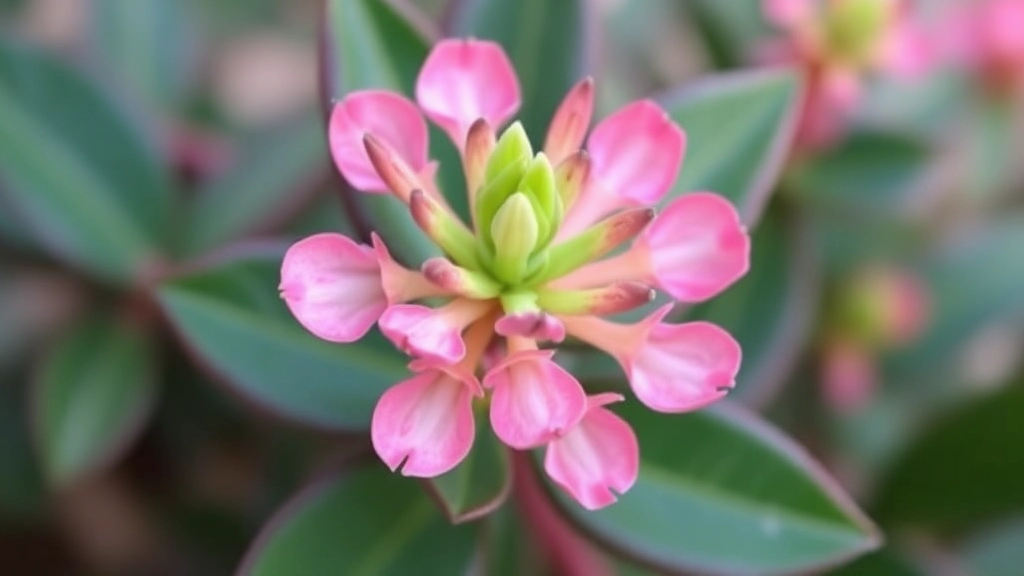
Have you ever wondered how traditional healing practices can harness the power of nature?
Kalanchoe Pinnata, often called “Patharchur” in Ayurveda, is a superstar when it comes to natural remedies. This plant is cherished not just for its beauty but also for its remarkable healing properties.
Ayurvedic Significance
In Ayurveda, Kalanchoe Pinnata is known for its anti-inflammatory, antimicrobial, and antioxidant properties. It’s often used to treat a variety of ailments, making it a versatile addition to any herbal medicine cabinet.
Common Uses in Ayurveda:
- Wound Healing: The leaves are applied directly to cuts and bruises to promote healing.
- Respiratory Issues: It’s used in remedies for coughs and colds, helping to soothe the throat and clear mucus.
- Digestive Health: Kalanchoe Pinnata is believed to aid digestion and alleviate stomach issues.
Real-Life Applications
Let me share a quick story. A friend of mine had a persistent cough that just wouldn’t budge. After trying various over-the-counter medications, she turned to Kalanchoe Pinnata tea. Within a few days, she noticed a significant improvement. This is just one example of how this plant can be a game-changer in everyday health.
Preparing Remedies
Creating your own remedies is easy! Here’s a simple way to make Kalanchoe Pinnata juice:
- Harvest Fresh Leaves: Pick a handful of healthy leaves.
- Wash Thoroughly: Clean them under running water.
- Blend: Add the leaves to a blender with a little water.
- Strain: Pour the mixture through a fine cloth to extract the juice.
- Consume: Drink it fresh to reap the benefits.
Tips for Propagating Kalanchoe Pinnata in Your Garden
As we explore the myriad benefits of Kalanchoe Pinnata, it’s essential to consider how to propagate this versatile plant effectively.
Are you wondering how to grow your own Kalanchoe Pinnata?
Here are some straightforward tips to help you propagate this resilient plant in your garden:
- Choose the Right Time: Spring or early summer is ideal for propagation. The warmer weather encourages growth.
- Select Healthy Leaves: Look for mature, healthy leaves. Avoid any that show signs of disease or damage.
- Cutting Technique: Use a clean, sharp knife to cut a leaf from the stem. Ensure the cut is clean to prevent rot.
- Let it Callous: Allow the cut leaf to dry for a few days in a shaded area. This helps form a callous, reducing the risk of rot when planted.
- Soil Preparation: Use a well-draining potting mix. A blend of sand and soil works well to prevent waterlogging.
- Planting the Leaf: Place the calloused end of the leaf into the soil, burying it just enough to hold it upright.
- Watering: Lightly mist the soil to keep it moist but not soggy. Overwatering can lead to root rot.
- Provide Indirect Light: Position the plant in a spot with bright, indirect sunlight. Too much direct sun can scorch the leaves.
- Patience is Key: It may take a few weeks for roots to develop. Be patient and keep an eye on the moisture levels.
By following these simple steps, you can enjoy the beauty and benefits of Kalanchoe Pinnata right in your own garden. For more detailed information on how to grow and care for Kalanchoe Pinnata, check out our complete guide. Additionally, if you’re interested in the health benefits of this plant, our health benefits guide provides valuable insights.
Precautions and Side Effects of Using Kalanchoe Pinnata
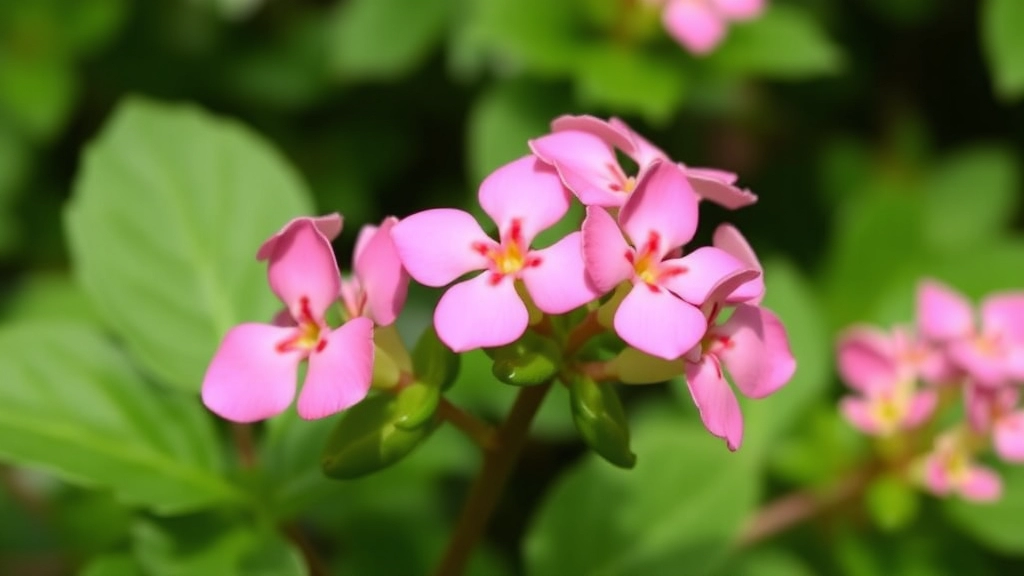
So, you’re excited about using Kalanchoe Pinnata for its various benefits, right? But hold on a minute! It’s essential to be aware of some precautions and potential side effects before diving in.
Know Before You Grow
- Allergies: Some folks may experience allergic reactions. Always do a patch test when using the leaves on your skin.
- Medication Interactions: If you’re on medications, especially for high blood pressure, consult your doctor. Kalanchoe can affect blood pressure levels.
- Pregnancy and Breastfeeding: It’s best to avoid Kalanchoe during pregnancy and breastfeeding. Safety first!
- Dosage Matters: Using too much can lead to digestive issues. Stick to recommended amounts—less is often more.
Side Effects to Watch For
- Stomach Upset: Some people report nausea or upset stomach after consuming Kalanchoe. If this happens, it’s a sign to cut back.
- Skin Irritation: While many use the leaves for skin care, they can cause irritation for some. If redness or itching occurs, stop using it.
- Kidney Concerns: Overuse can stress your kidneys, so moderation is key, especially if you have pre-existing kidney issues.
A Quick Recap
In summary, Kalanchoe Pinnata is a powerhouse, but it’s not without its quirks. Always approach it with caution, especially if you have existing health conditions or are on medication.
As we delve deeper into the medicinal benefits of Kalanchoe Pinnata, it’s essential to highlight its potential role in supporting kidney and gallbladder health. Many individuals seek natural remedies to enhance their well-being, and Kalanchoe Pinnata has garnered attention in this realm.
Kalanchoe Pinnata is renowned for its therapeutic properties. Its leaves contain compounds that may aid in detoxification and support organ function. Here’s how it can be beneficial for kidney and gallbladder health:
– **Diuretic Effects**: The leaves are believed to promote urine production, helping to flush out toxins and reduce the burden on the kidneys.
– **Stone Prevention**: Some traditional uses suggest that Kalanchoe Pinnata may help in preventing the formation of kidney stones by promoting better fluid balance.
– **Gallbladder Function**: The plant’s anti-inflammatory properties might assist in maintaining gallbladder health, potentially aiding in the digestion of fats.
Incorporating Kalanchoe Pinnata into your routine can be straightforward. Here are a few methods:
– **Juicing**: Blend fresh leaves with water to create a juice. This can be consumed daily for potential benefits.
– **Tea**: Steep the leaves in hot water to create a [herbal tea](https://planthq.org/kalanchoe-pinnata-tea-benefits-health-and-wellness-guide/). This method is both soothing and beneficial.
– **Topical Application**: For localized issues, crushed leaves can be applied directly to the skin.
While Kalanchoe Pinnata offers various benefits, it’s vital to approach its use with caution:
– **Consult a Professional**: Always consult a healthcare provider before starting any new herbal remedy, especially if you have existing health conditions.
– **Monitor Dosage**: Excessive consumption may lead to adverse effects. Moderation is key.
For more detailed information on how Kalanchoe Pinnata can be used as a [natural remedy for kidney stones](https://planthq.org/kalanchoe-pinnata-natural-remedy-for-kidney-stones/), make sure to explore further resources.
Managing Common Pests and Diseases for Kalanchoe Pinnata
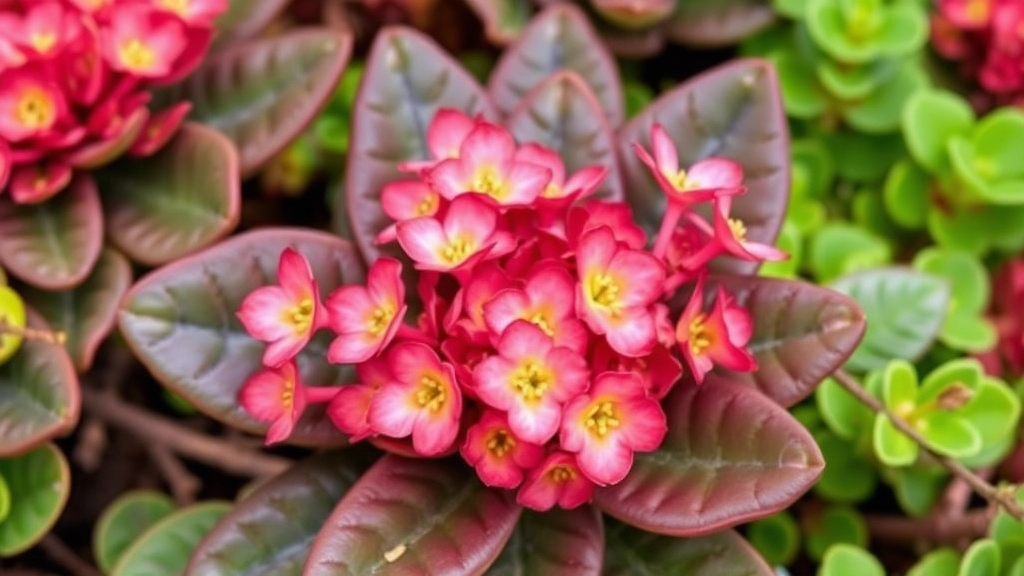
So, you’ve got your Kalanchoe Pinnata thriving in your garden, but then you notice some pesky intruders or signs of illness. It’s a common concern for many plant lovers, and trust me, you’re not alone in this.
Common Pests to Watch Out For:
- Aphids: These tiny green bugs love to suck the sap from your Kalanchoe leaves. They can cause yellowing and curling.
- Mealybugs: These white, cottony pests can be a real nuisance, especially in the crevices of leaves.
- Spider Mites: If you see fine webbing or tiny specks on your leaves, these little guys might be the culprits.
Signs of Disease:
- Leaf Spot: Dark spots on leaves can indicate fungal infections.
- Root Rot: Overwatering can lead to mushy roots, which is a sure sign of trouble.
How to Manage These Issues:
- Regular Inspection: Check your plants weekly for any signs of pests or disease. Early detection is key.
- Natural Remedies:
- For aphids, spray a mixture of water and dish soap.
- Mealybugs can be wiped off with a cotton swab dipped in alcohol.
- Neem Oil: This natural pesticide works wonders against a variety of pests. Just mix it with water and spray on your plants.
- Healthy Soil: Ensure your Kalanchoe is planted in well-draining soil to prevent root rot.
- Proper Watering: Avoid overwatering! Let the soil dry out between waterings.
- Good Air Circulation: Space your plants out to prevent fungal diseases.
By keeping an eye on these common pests and diseases, you can ensure your Kalanchoe Pinnata remains healthy and vibrant.
Importance of Kalanchoe Pinnata in Sustainable Gardening Practices
As we delve deeper into the benefits of Kalanchoe Pinnata, it becomes clear that this remarkable plant plays a significant role in sustainable gardening practices.
Eco-Friendly Characteristics
Kalanchoe Pinnata is not just a medicinal marvel; it also contributes to ecological balance. Here’s how:
- Drought Resistance: This succulent thrives in arid conditions, reducing the need for excessive watering.
- Soil Improvement: Its deep roots help aerate the soil, promoting better drainage and nutrient uptake.
- Natural Pest Control: The plant is known to attract beneficial insects, which can help keep harmful pests at bay.
Biodiversity Support
Incorporating Kalanchoe Pinnata into your garden can enhance local biodiversity. It serves as a habitat and food source for various pollinators and beneficial insects.
Low Maintenance
For those concerned about time and effort in gardening, Kalanchoe Pinnata is a low-maintenance option.
- Minimal Care: Once established, it requires little attentionâperfect for busy gardeners.
- Versatile Growth: It can adapt to various soil types and conditions, making it suitable for many environments.
Sustainable Practices
Utilising Kalanchoe Pinnata can align with sustainable gardening practices by:
- Reducing Chemical Use: Its natural properties can replace chemical treatments for common ailments in plants.
- Encouraging Organic Gardening: This plant fits well within an organic gardening framework, promoting health without synthetic additives.
Incorporating Kalanchoe Pinnata into your gardening routine not only supports sustainable practices but also enriches your garden’s ecosystem. For more detailed information on how to grow and care for this plant, check out our guide on growing and caring for Kalanchoe Pinnata. Additionally, explore the complete guide to Kalanchoe Pinnata air plant care for more insights.
FAQs about Kalanchoe Pinnata in Tamil
What are the common Tamil names for Kalanchoe Pinnata?
In Tamil Nadu, Kalanchoe Pinnata is often referred to as “Ponnanganni” or “Kalanchoe”. These names are widely recognized within the local community.
Why is Kalanchoe Pinnata culturally significant in Tamil Nadu?
Kalanchoe Pinnata holds cultural importance due to its extensive use in traditional medicine, spiritual rituals, and even culinary practices. It symbolizes healing and tradition in Tamil Nadu.
What are some traditional remedies using Kalanchoe Pinnata leaves?
Traditional remedies include using the leaves for wound healing, respiratory issues, digestive health, inflammation reduction, and fever relief. These remedies have been passed down through generations.
How is Kalanchoe Pinnata used in Ayurveda?
In Ayurveda, Kalanchoe Pinnata is known for its anti-inflammatory, antimicrobial, and antioxidant properties. It is used to treat wounds, respiratory issues, and digestive problems.
Are there any precautions to consider when using Kalanchoe Pinnata?
Yes, it’s essential to be aware of potential allergies, medication interactions, and the effects during pregnancy and breastfeeding. Always use the plant in recommended amounts to avoid digestive issues and other side effects.
What are the common pests and diseases that affect Kalanchoe Pinnata?
Common pests include aphids, mealybugs, and spider mites. Diseases to watch out for are leaf spot and root rot. Regular inspection and natural remedies can help manage these issues.
How can I prepare Kalanchoe Pinnata juice at home?
To prepare Kalanchoe Pinnata juice, harvest fresh leaves, wash them thoroughly, blend with a little water, strain through a fine cloth, and consume the fresh juice.
What are the side effects of using Kalanchoe Pinnata?
Some side effects may include stomach upset, skin irritation, and potential kidney concerns if overused. It’s important to monitor your body’s reaction and consult a healthcare provider if necessary.
Can Kalanchoe Pinnata be used for culinary purposes?
Yes, some communities incorporate Kalanchoe Pinnata leaves into their diets, appreciating both the taste and health benefits.
What are the spiritual beliefs associated with Kalanchoe Pinnata?
In some cultures, it is believed that keeping Kalanchoe Pinnata at home brings good fortune and health. It’s often used in rituals and blessings.
References
-
Kalanchoe pinnata: A review of its ethnomedicinal uses, phytochemistry, and pharmacology
-
Ethnomedicinal uses of Kalanchoe pinnata among indigenous communities
-
Medicinal properties of Kalanchoe pinnata (Lam.) Pers. (Crassulaceae)
